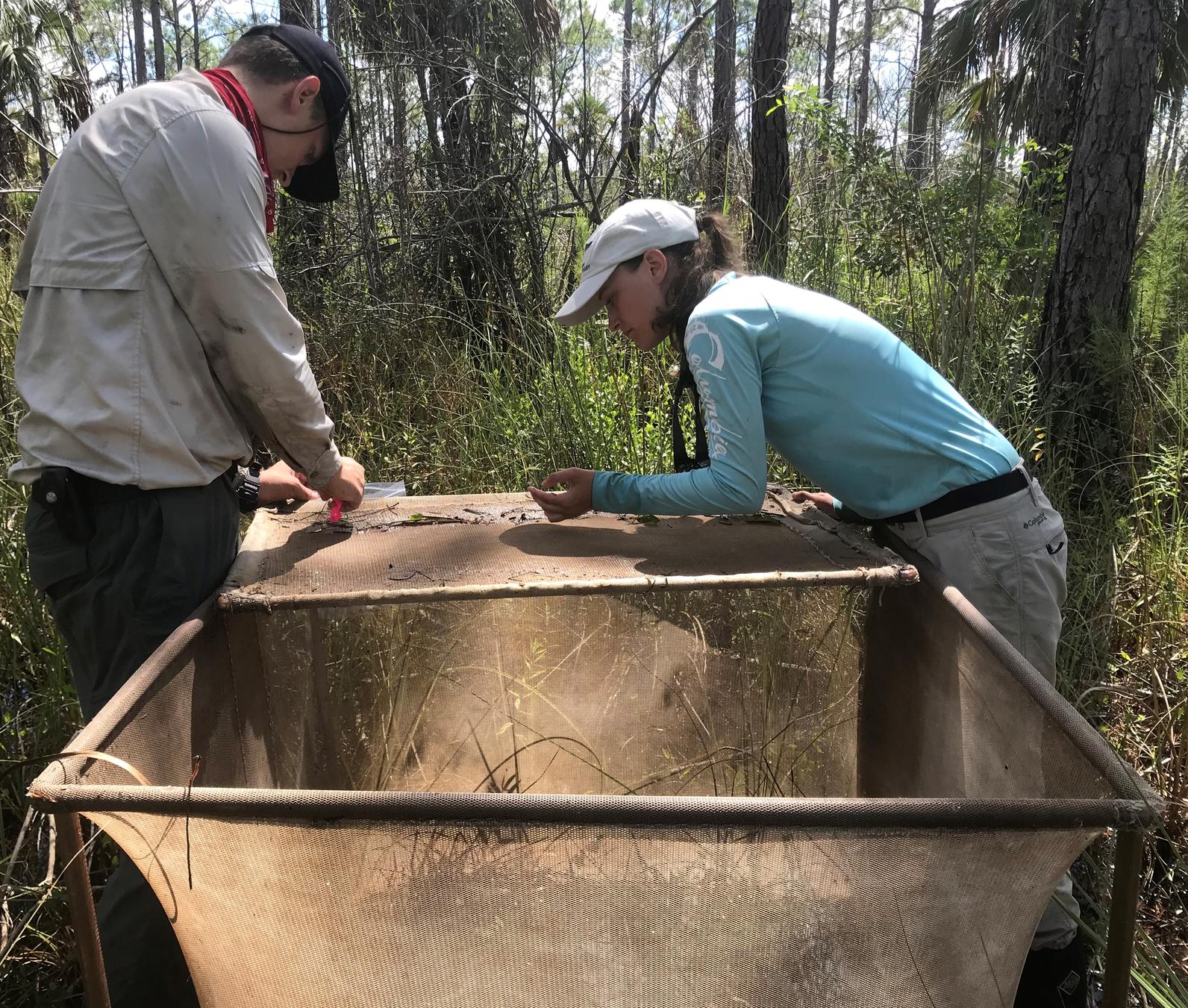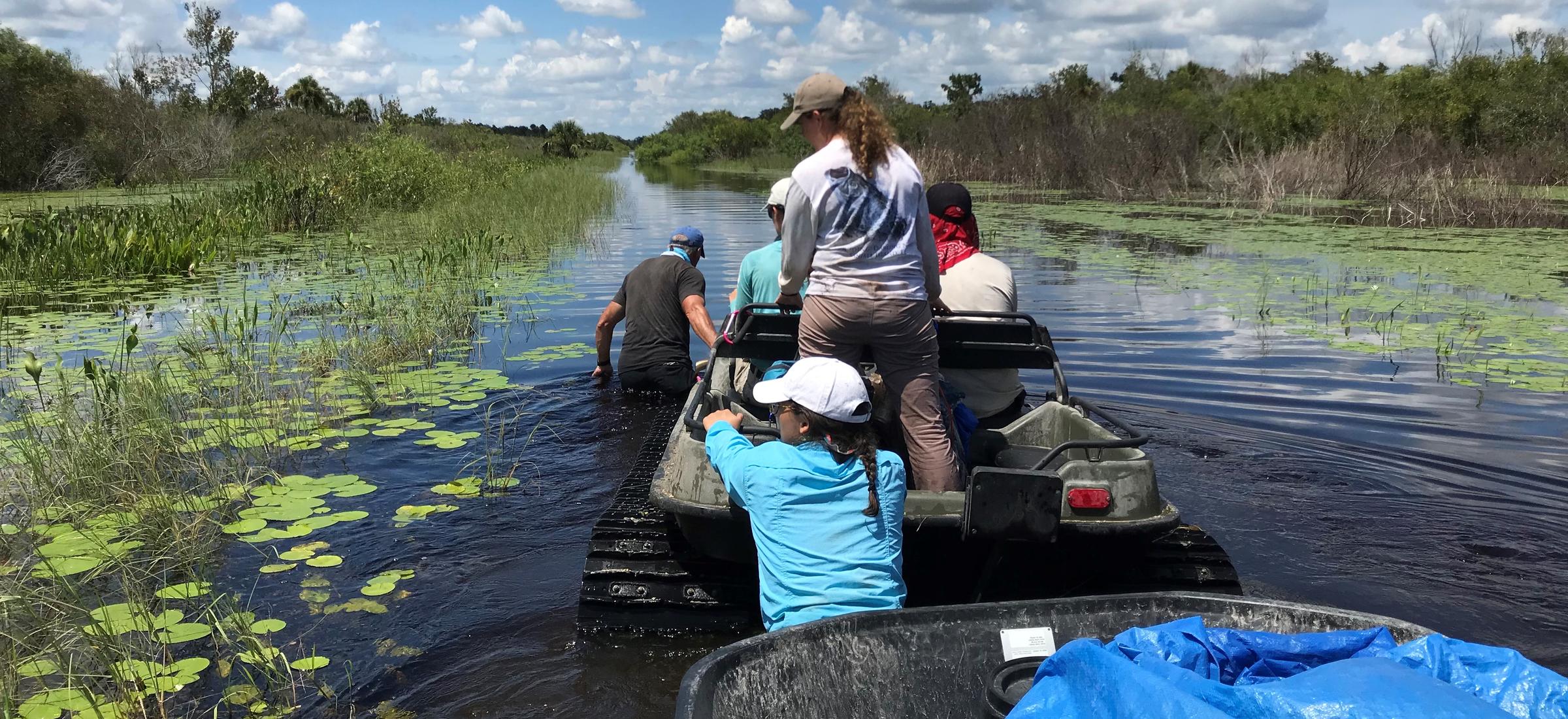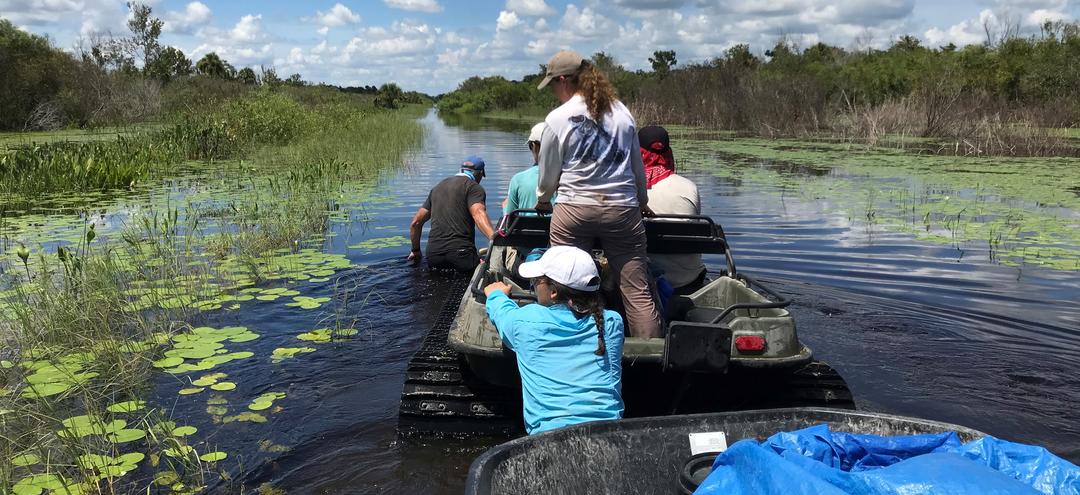This summer our Western Everglades research team began an exciting new project. The Picayune Strand Restoration Project (PSRP), part of the Comprehensive Everglades Restoration Plan, is an effort to rehydrate wetlands and restore wildlife habitat and wetland function in Picayune Strand State Forest. Southern Golden Gate Estates, an 85-square-mile subdivision that was drained and platted for development in the 1960s, had extensive canal and road systems but the development was never fully realized. Recognizing the potential to return the area to natural conditions, the state of Florida acquired the lands and restoration, or “de-construction,” began in 2007. Roads were leveled, canals were plugged, and spreader facilities were built to re-distribute water over the landscape. While restoration of this site continues, efforts to assess restoration success through ecological monitoring are already underway.
Audubon Florida’s Western Everglades Research Center has recently partnered with colleagues at Johnson Engineering, Inc. and Florida Gulf Coast University to complete an aquatic monitoring project focused on aquatic fauna populations three years after the first phase of restoration was completed. This effort uses data from fish, aquatic invertebrate and tree frog populations to assess conditions in the newly restored PSRP wetlands, in addition to reference sites in Fakahatchee Strand Preserve State Park and Florida Panther National Wildlife Refuge. These data can then be used by South Florida Water Management District and U.S. Army Corps of Engineers staff as an adaptive management tool to gauge restoration success for this project.
Previous PSRP fish monitoring efforts were complicated by the recent invasion of this region by African Jewelfish (Hemichromis letourneuxi), an invasive nonnative fish that has become ubiquitous throughout much of South Florida. African Jewelfish complicate fish sampling because of their seeming preference for fish traps. Jewelfish’s attraction to passive traps (traps that are set out for fish to enter), coupled with their aggressive behavior and ability to consume small fish, makes use of these traps to examine fish populations quite difficult.
Imagine putting a fish trap out in the field and African Jewelfish load themselves into the traps and eat anything that is already in there. Then, they either scare other fish away from the traps or they eat anything that tries to come in with them. When you finally check the trap you find a trap full of jewelfish and you don’t know whether jewelfish were the only fish out there, or if they were just the only ones that swam into the trap and survived. This is the problem biologists faced.
Audubon’s plan for PSRP fish monitoring incorporates 1-m2 throw traps, an active trapping method that not only removes the ‘trap preference’ bias that jewelfish present but also provides data on fish density. These density estimates give our research team another level of data on the fish community, allowing us to examine the density aquatic prey that are available to wading birds like Wood Storks and other fish-eating wetland species. This project is an excellent opportunity for our research team to partner with colleagues, to brainstorm a solution for a challenging ecological monitoring problem, and to provide a better understanding of the restoration value of PSRP wetlands.

Restoration of Picayune Strand generates untold benefit for aquatic and terrestrial flora and fauna, including humans. Restoring slow-moving sheet flow to the landscape allows dispersal of aquatic fauna, ultimately supporting higher biodiversity. Although it has only been three years since restoration, we can already see fish communities where there had been dry ground for decades. The PSRP aims to not only restore 80,000 acres within Picayune Strand, but it also provides hydrologic connectivity and water for an additional 80,000 acres of wetlands and estuaries in the Fakahatchee Strand State Preserve, Ten Thousand Islands National Wildlife Refuge, Rookery Bay National Estuarine Reserve, and Collier-Seminole State Park. This will help recharge water supply aquifers and prevent saltwater intrusion from advancing sea level rise. The PSRP is a remarkable conservation effort that Audubon is proud to be a part of, one which will continue to provide value to future generations of animals- humans and nonhumans alike.
Support for this project is provided by a contract from the South Florida Water Management District to Johnson Engineering, Inc. and supplemental funds from the Vincent J. Coates Foundation.









